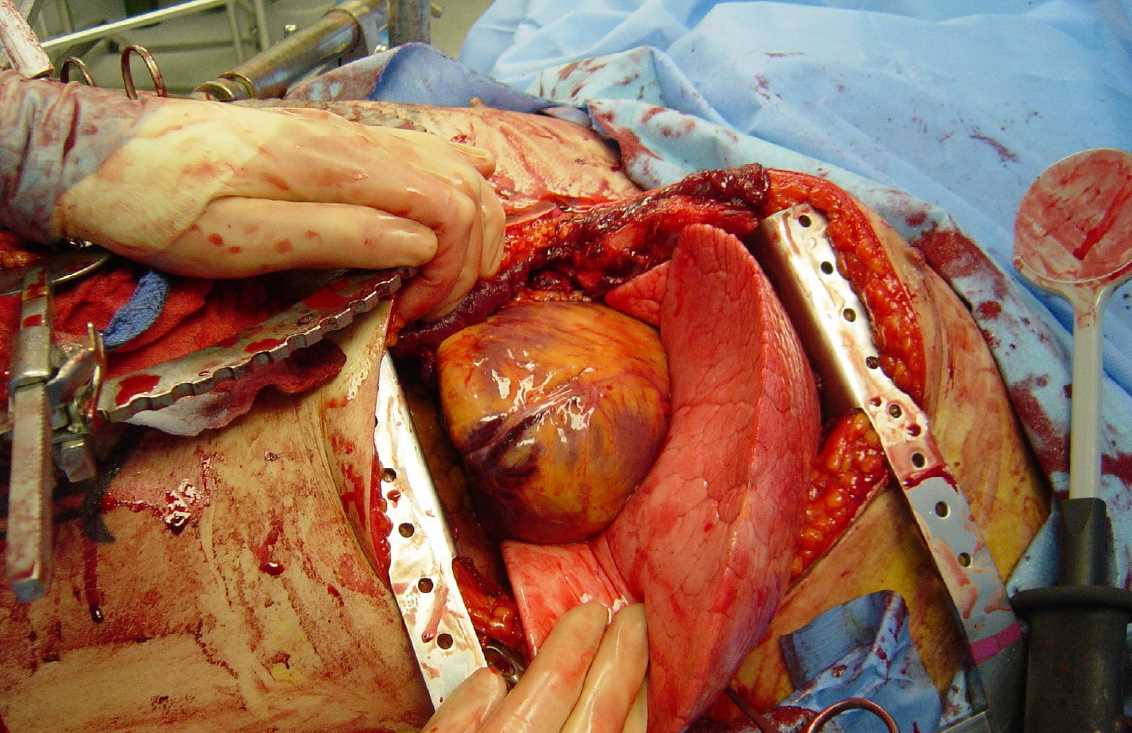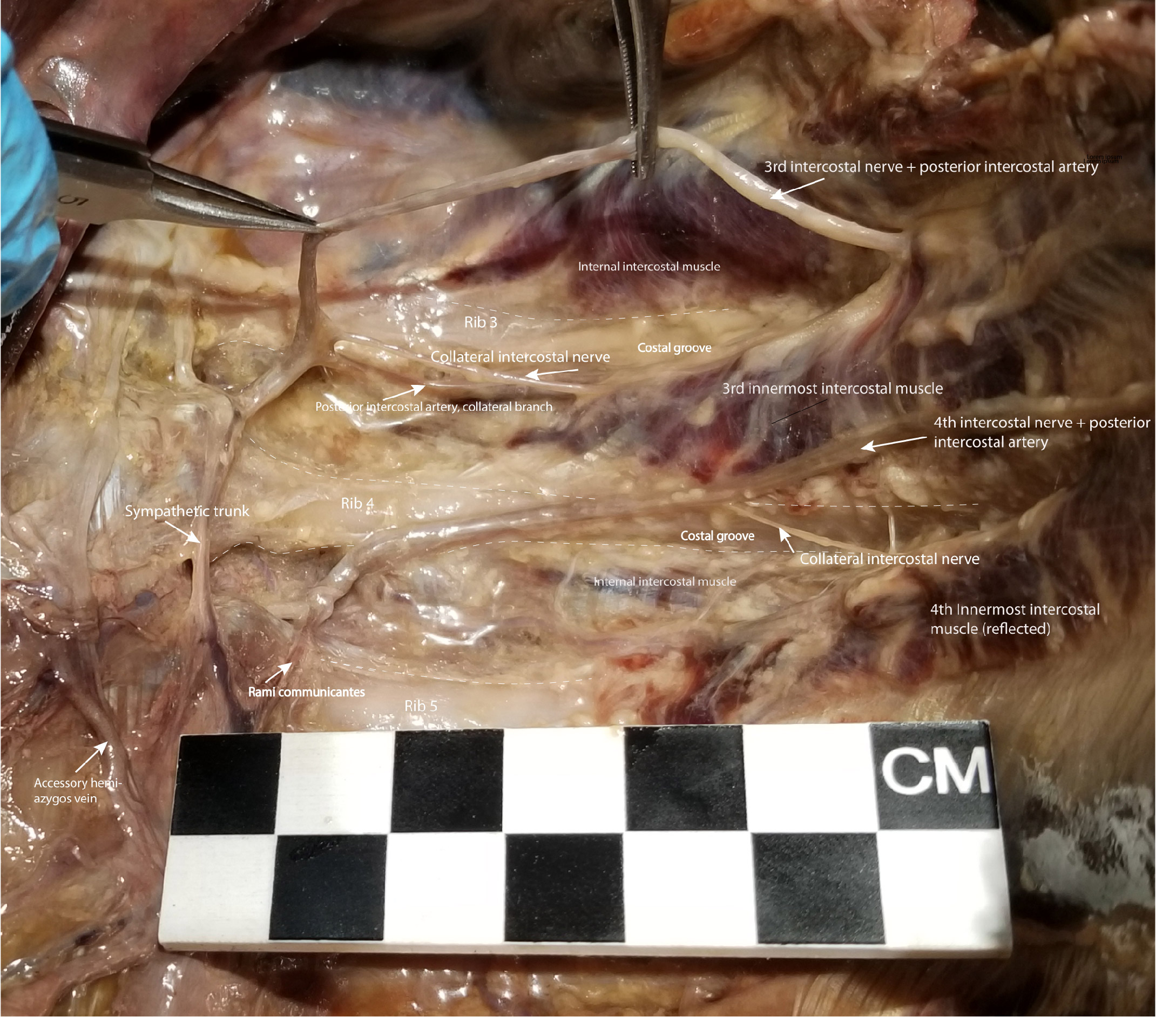[1]
Kirkpatrick AW, Ball CG, D'Amours SK, Zygun D. Acute resuscitation of the unstable adult trauma patient: bedside diagnosis and therapy. Canadian journal of surgery. Journal canadien de chirurgie. 2008 Feb:51(1):57-69
[PubMed PMID: 18248707]
[2]
Menaker J, Cushman J, Vermillion JM, Rosenthal RE, Scalea TM. Ultrasound-diagnosed cardiac tamponade after blunt abdominal trauma-treated with emergent thoracotomy. The Journal of emergency medicine. 2007 Jan:32(1):99-103
[PubMed PMID: 17239739]
[3]
Leidel BA, Kanz KG, Kirchhoff C, Bürklein D, Wismüller A, Mutschler W. [Cardiac arrest following blunt chest injury. Emergency thoracotomy without ifs or buts?]. Der Unfallchirurg. 2007 Oct:110(10):884-90
[PubMed PMID: 17909734]
[4]
Boczar ME, Howard MA, Rivers EP, Martin GB, Horst HM, Lewandowski C, Tomlanovich MC, Nowak RM. A technique revisited: hemodynamic comparison of closed- and open-chest cardiac massage during human cardiopulmonary resuscitation. Critical care medicine. 1995 Mar:23(3):498-503
[PubMed PMID: 7874901]
[5]
Jackson RE, Freeman SB. Hemodynamics of cardiac massage. Emergency medicine clinics of North America. 1983 Dec:1(3):501-13
[PubMed PMID: 6396069]
[6]
Yamamoto R, Suzuki M, Nakama R, Kase K, Sekine K, Kurihara T, Sasaki J. Impact of cardiopulmonary resuscitation time on the effectiveness of emergency department thoracotomy after blunt trauma. European journal of trauma and emergency surgery : official publication of the European Trauma Society. 2019 Aug:45(4):697-704. doi: 10.1007/s00068-018-0967-y. Epub 2018 May 31
[PubMed PMID: 29855670]
[7]
Lau HK, Chua ISY, Ponampalam R. Penetrating Thoracic Injury and Fatal Aortic Transection From the Barb of a Stingray. Wilderness & environmental medicine. 2020 Mar:31(1):78-81. doi: 10.1016/j.wem.2019.09.004. Epub 2020 Jan 23
[PubMed PMID: 31983600]
[8]
Seamon MJ, Haut ER, Van Arendonk K, Barbosa RR, Chiu WC, Dente CJ, Fox N, Jawa RS, Khwaja K, Lee JK, Magnotti LJ, Mayglothling JA, McDonald AA, Rowell S, To KB, Falck-Ytter Y, Rhee P. An evidence-based approach to patient selection for emergency department thoracotomy: A practice management guideline from the Eastern Association for the Surgery of Trauma. The journal of trauma and acute care surgery. 2015 Jul:79(1):159-73. doi: 10.1097/TA.0000000000000648. Epub
[PubMed PMID: 26091330]
[9]
Gao JM, Du DY, Kong LW, Yang J, Li H, Wei GB, Li CH, Liu CP. Emergency Surgery for Blunt Cardiac Injury: Experience in 43 Cases. World journal of surgery. 2020 May:44(5):1666-1672. doi: 10.1007/s00268-020-05369-6. Epub
[PubMed PMID: 31915978]
Level 3 (low-level) evidence
[10]
Farooqui AM, Cunningham C, Morse N, Nzewi O. Life-saving emergency clamshell thoracotomy with damage-control laparotomy. BMJ case reports. 2019 Mar 4:12(3):. doi: 10.1136/bcr-2018-227879. Epub 2019 Mar 4
[PubMed PMID: 30837237]
Level 3 (low-level) evidence
[11]
Moskowitz EE, Burlew CC, Kulungowski AM, Bensard DD. Survival after emergency department thoracotomy in the pediatric trauma population: a review of published data. Pediatric surgery international. 2018 Aug:34(8):857-860. doi: 10.1007/s00383-018-4290-9. Epub 2018 Jun 6
[PubMed PMID: 29876644]
[12]
Gil LA, Anstadt MJ, Kothari AN, Javorski MJ, Gonzalez RP, Luchette FA. The National Trauma Data Bank story for emergency department thoracotomy: How old is too old? Surgery. 2018 Mar:163(3):515-521. doi: 10.1016/j.surg.2017.12.011. Epub 2018 Feb 3
[PubMed PMID: 29398037]
[13]
Simms ER, Flaris AN, Franchino X, Thomas MS, Caillot JL, Voiglio EJ. Bilateral anterior thoracotomy (clamshell incision) is the ideal emergency thoracotomy incision: an anatomic study. World journal of surgery. 2013 Jun:37(6):1277-85. doi: 10.1007/s00268-013-1961-5. Epub
[PubMed PMID: 23435679]
[14]
Garcia-Rinaldi R, Defore WW, Mattox KL, Beall AC Jr. Unimpaired renal, myocardial and neurologic function after cross clamping of the thoracic aorta. Surgery, gynecology & obstetrics. 1976 Aug:143(2):249-52
[PubMed PMID: 941082]
[15]
Nunn A, Prakash P, Inaba K, Escalante A, Maher Z, Yamaguchi S, Kim DY, Maciel J, Chiu WC, Drumheller B, Hazelton JP, Mukherjee K, Luo-Owen X, Nygaard RM, Marek AP, Morse BC, Fitzgerald CA, Bosarge PL, Jawa RS, Rowell SE, Magnotti LJ, Ong AW, Brahmbhatt TS, Grossman MD, Seamon MJ. Occupational exposure during emergency department thoracotomy: A prospective, multi-institution study. The journal of trauma and acute care surgery. 2018 Jul:85(1):78-84. doi: 10.1097/TA.0000000000001940. Epub
[PubMed PMID: 29664893]
[16]
Dayama A, Sugano D, Spielman D, Stone ME Jr, Kaban J, Mahmoud A, McNelis J. Basic data underlying clinical decision-making and outcomes in emergency department thoracotomy: tabular review. ANZ journal of surgery. 2016 Jan-Feb:86(1-2):21-6. doi: 10.1111/ans.13227. Epub 2015 Jul 14
[PubMed PMID: 26178013]
[17]
Hoth JJ, Scott MJ, Bullock TK, Stassen NA, Franklin GA, Richardson JD. Thoracotomy for blunt trauma: traditional indications may not apply. The American surgeon. 2003 Dec:69(12):1108-11
[PubMed PMID: 14700301]
[18]
Khorsandi M, Skouras C, Shah R. Is there any role for resuscitative emergency department thoracotomy in blunt trauma? Interactive cardiovascular and thoracic surgery. 2013 Apr:16(4):509-16. doi: 10.1093/icvts/ivs540. Epub 2012 Dec 28
[PubMed PMID: 23275145]
[19]
Slessor D, Hunter S. To be blunt: are we wasting our time? Emergency department thoracotomy following blunt trauma: a systematic review and meta-analysis. Annals of emergency medicine. 2015 Mar:65(3):297-307.e16. doi: 10.1016/j.annemergmed.2014.08.020. Epub 2014 Oct 23
[PubMed PMID: 25443990]
Level 1 (high-level) evidence
[20]
DuBose J, Fabian T, Bee T, Moore LJ, Holcomb JB, Brenner M, Skarupa D, Inaba K, Rasmussen TE, Turay D, Scalea TM, AAST AORTA Study Group. Contemporary Utilization of Resuscitative Thoracotomy: Results From the AAST Aortic Occlusion for Resuscitation in Trauma and Acute Care Surgery (AORTA) Multicenter Registry. Shock (Augusta, Ga.). 2018 Oct:50(4):414-420. doi: 10.1097/SHK.0000000000001091. Epub
[PubMed PMID: 29280925]



